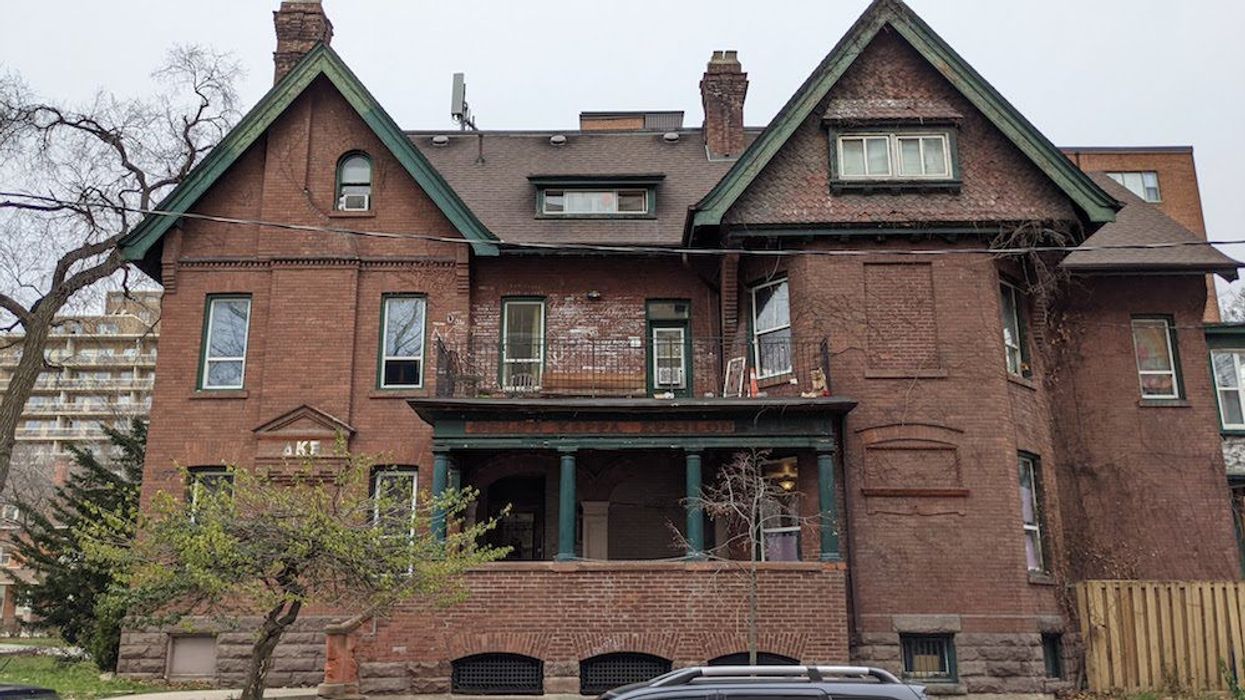Toronto’s Annex neighbourhood is famous for its architecture. Most homes were built between 1880 and 1910 in various architectural styles that include Victorian, Queen Anne, and Richardsonian Romanesque. The area has its own architectural style, in fact, called Annex Style, originated by Toronto architect E.J. Lennox.
Throughout its storied history, many Annex homes were occupied by Toronto’s elite, with Timothy Eaton being one of the first residents to call the neighbourhood home. His house stood at northwest corner of Spadina Road and Lowther Avenue, but was eventually demolished. Timothy was behind the Canadian retail store Eaton’s, which was once one of the largest department stores in North America. His company shaped the Canadian retail landscape and lifestyle.
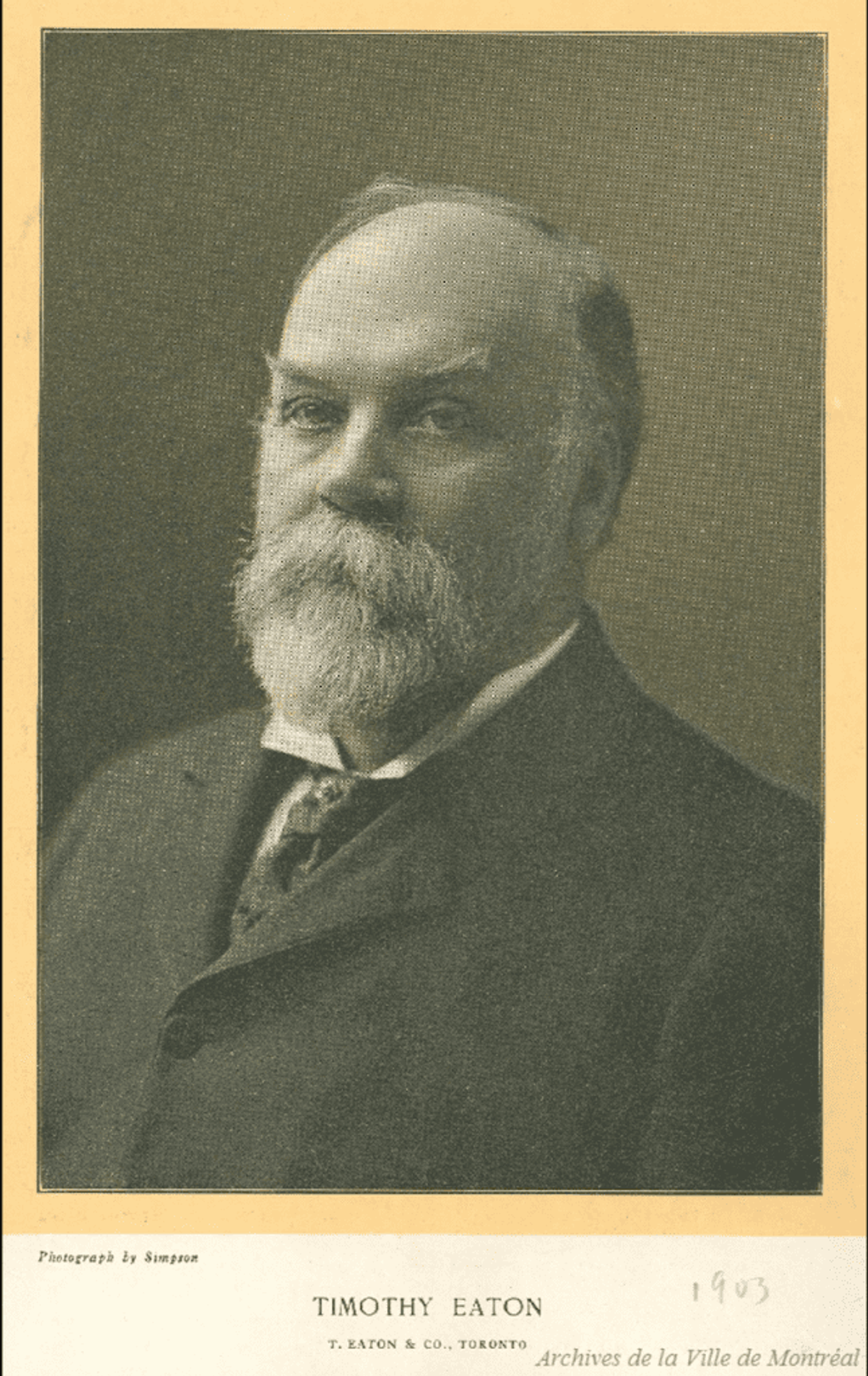
About 350 metres away from where Timothy’s home once stood is 157 St. George Street, a house that was, for a time, the residence of his eldest son, Edward Young Eaton. Though Edward lived in it for only a few years, it stayed in the family well until the 1960s.
From the Eaton's Homestead to Frat Parties
Edward’s home was built in 1898 by George Martel Miller, who had also built the original (and now recently reopened) Gladstone House. Edward lived in the house for two years before his untimely death in 1900 at just 37 years old. His obituary in the Toronto Star called him “Canada’s Greatest Merchant Prince.” He started as a cash boy at his father’s store and rose to become vice president.
For his funeral, the Toronto store closed for the day. It is said that upwards of 1,000 employees lined the streets to pay their respects as Edward was taken to the family’s Mount Pleasant Cemetery mausoleum.
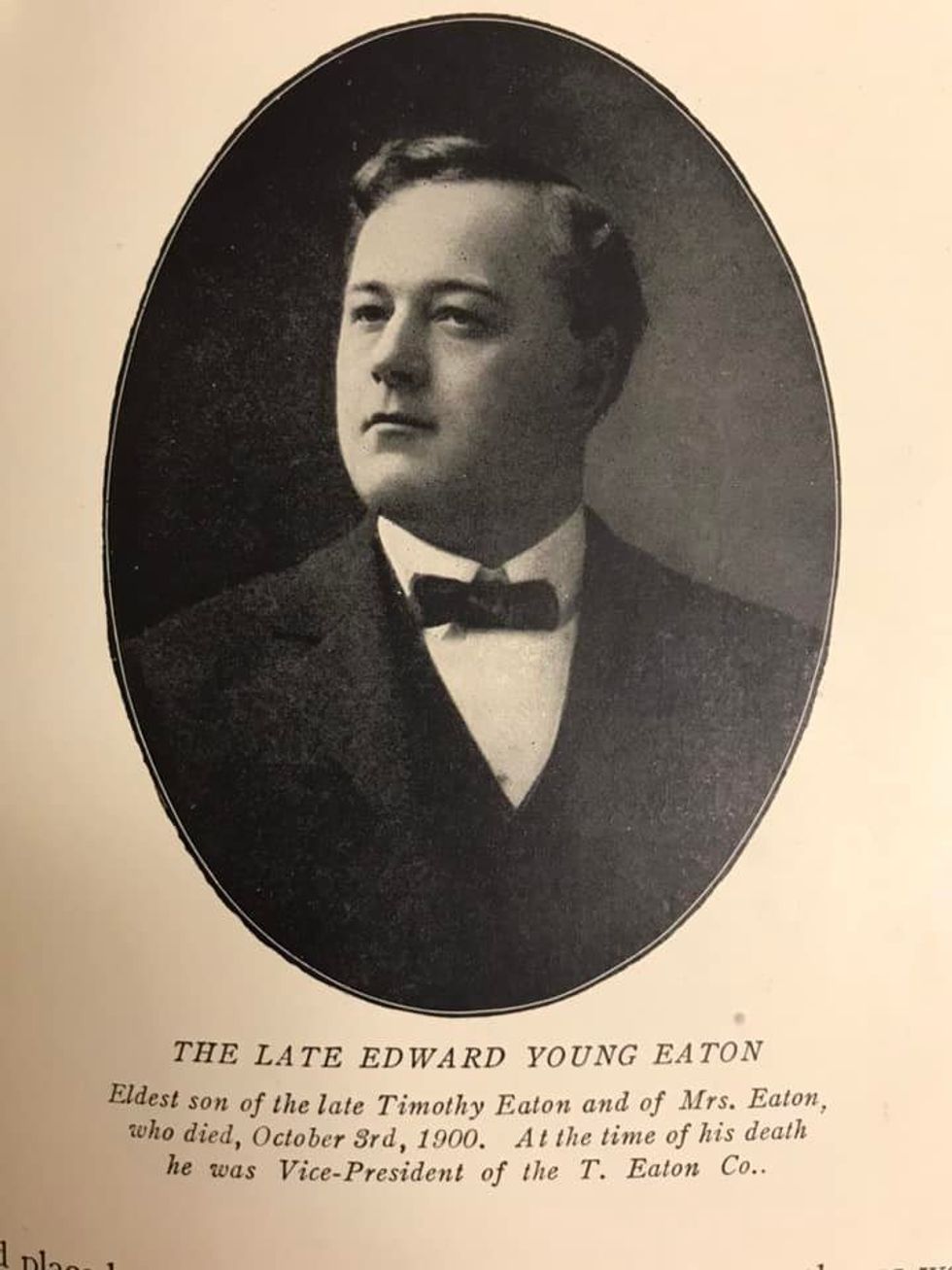
After his death, the Eaton family was at the property until 1962 according to the Toronto Directories. During that time the neighbourhood went through a massive change. The wealthy began vacating the area in the 1920s and many homes were converted to rooming houses, fraternities, businesses, and more. While some were torn down in favour of apartment buildings.
After 1962, the home became a school for a few years. In 1966, it was sold to fraternity Delta Kappa Epsilon (DKE). According to the fraternity’s website, the Eaton family sold the home to them for a dollar to avoid paying property taxes. The fraternity has since occupied the house for over half a century.
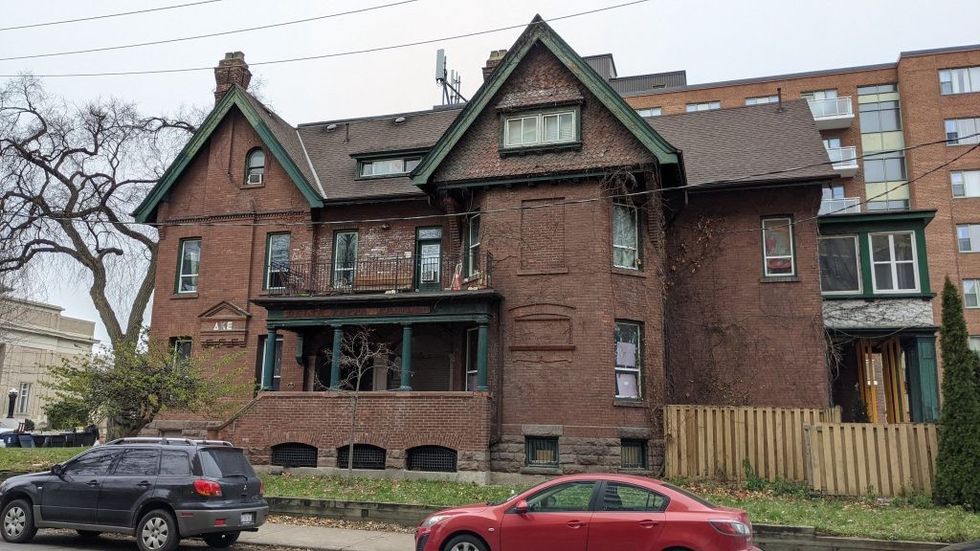
It’s hard to imagine the beauty of the home today. It is showing significant signs of aging, none of which could be called graceful. The wood detailing is chipping and second-floor sunroom is being supported with jacks. The fraternity knows the house is in despair and is raising funds to renovate it.
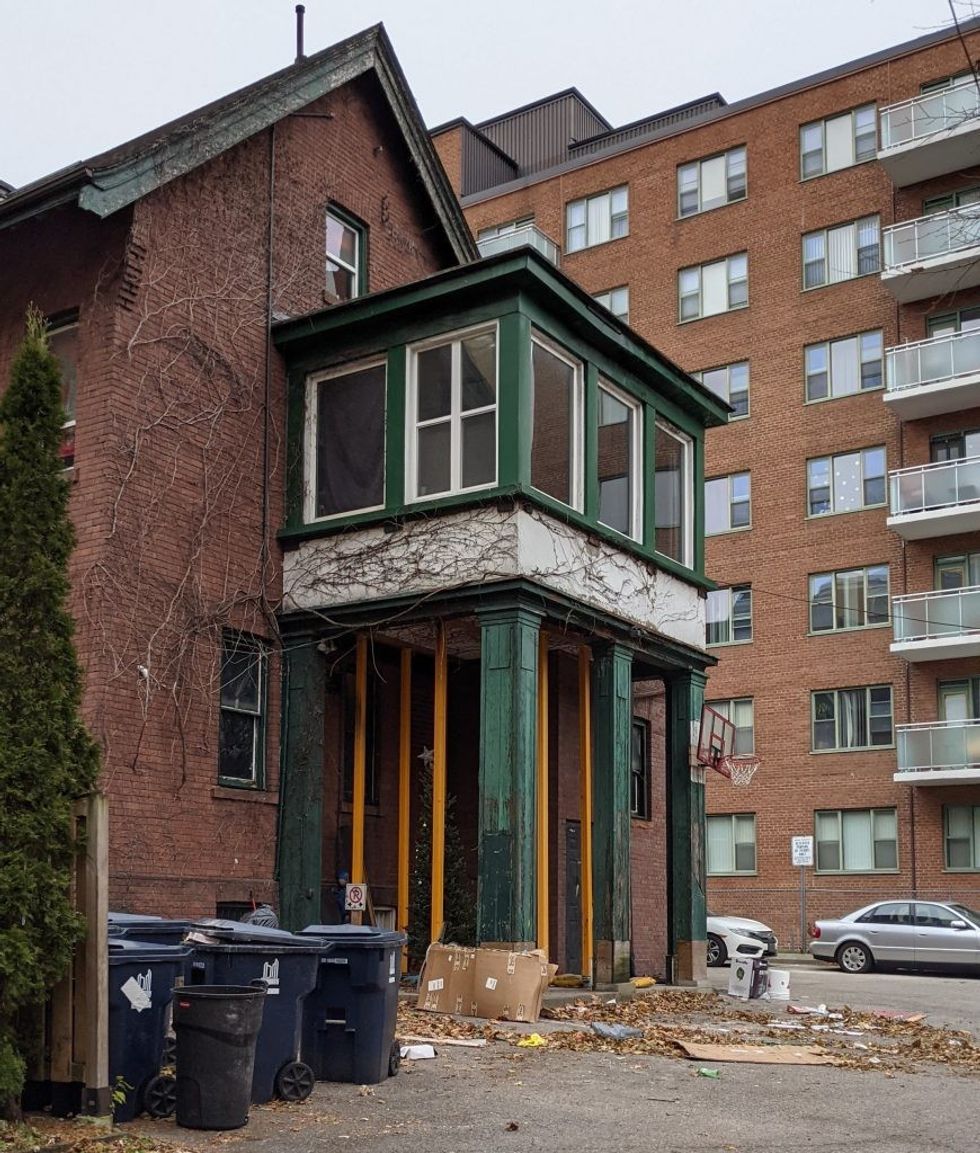
Walking around the property one will notice a couch on the porch and most windows covered with flags, Bristol board, and garbage bags. Names like “Seth,” “Mac” and “Alicia” are written in chalk on the bricks and garbage litters the property. On occasion, passersby may see a table with abandoned red solo cups from a drinking game. It’s hard to believe a family of such stature once lived here.
The interior, according to DKE website has a TV room with “stadium style seating,” a billiards table, DJ booth, and a massive kitchen with a gas-range stove.
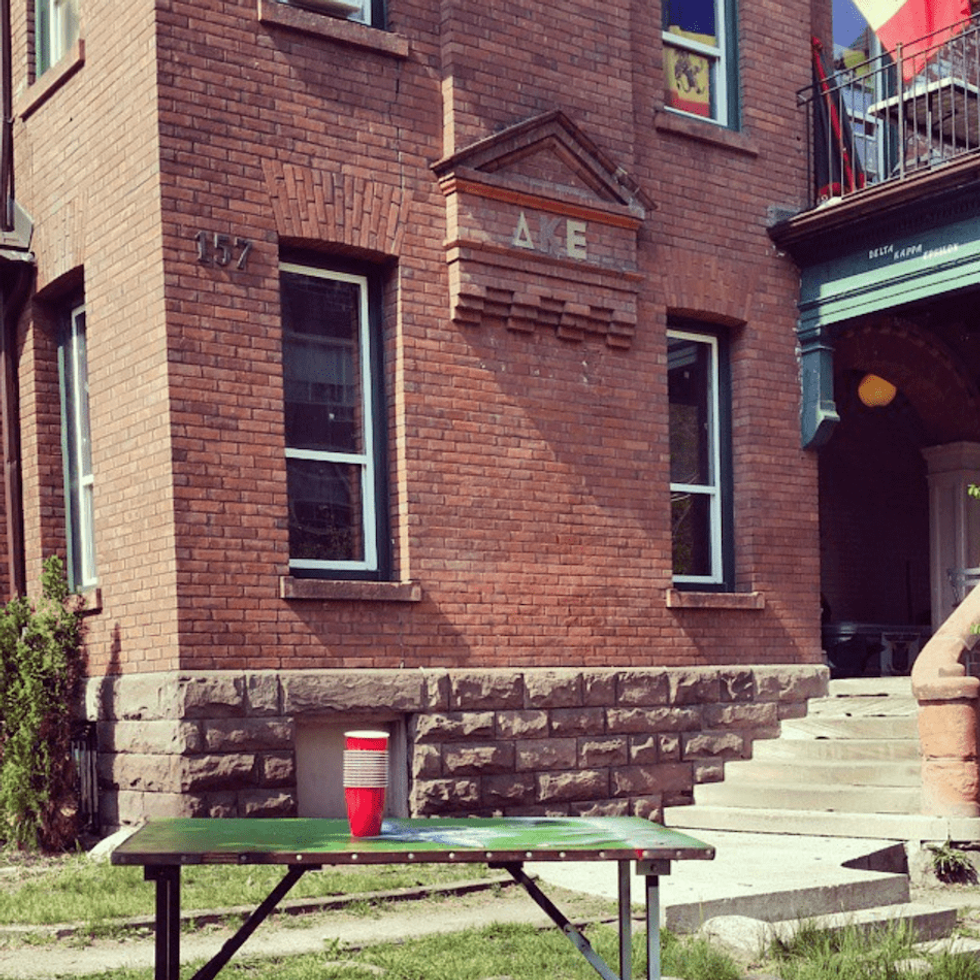
While DKE legacies would know the significance of the Eaton family, the current frat brothers were only babies when Eaton’s closed – some not even born yet. It’s difficult to discern how much they know about this family dynasty and its impact on Canadian life.
A Brief History of Eaton’s
Timothy Eaton was born in Ballymena, Northern Ireland and came to Canada in 1854. He opened T. Eaton Company Limited in 1869 in Toronto on Yonge Street. The store was first of many across Canada, marking the start of a 130-year legacy.
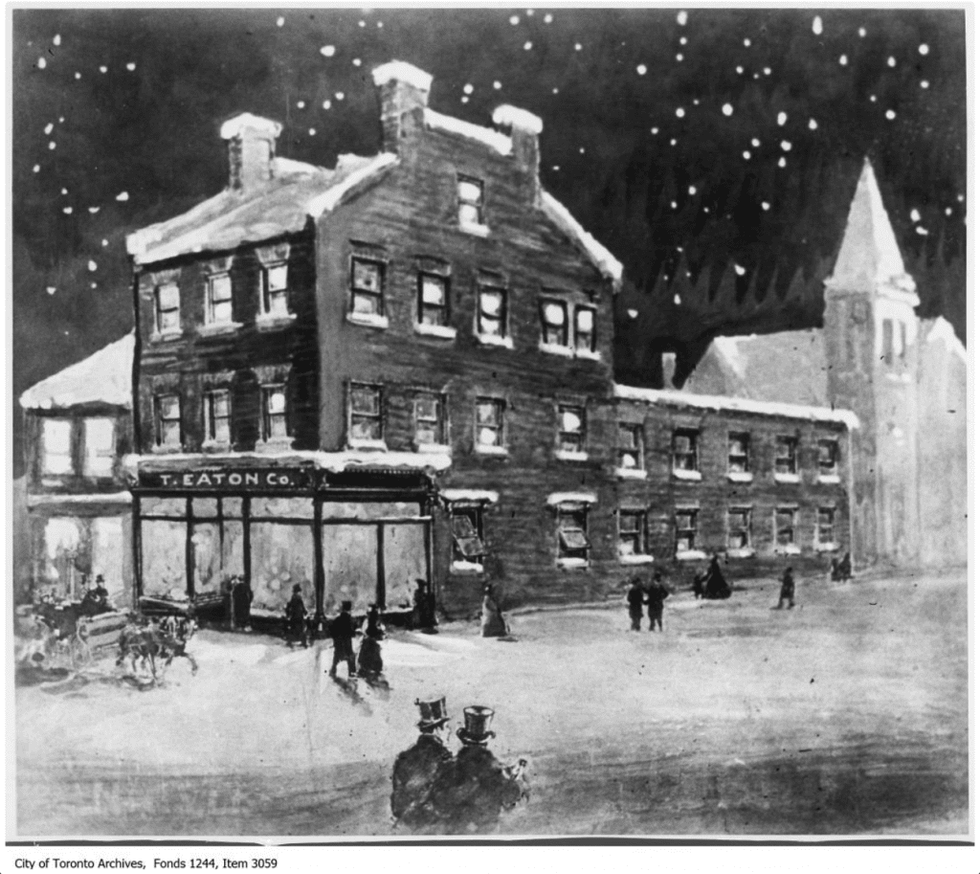
Eaton’s presented fair prices and attractive displays. It moved from the credit and barter method of shopping to cash sales and one fixed price. It also ensured those unsatisfied with their product could return them.
Its stores were architectural wonders and its College Street location (now College Park) had a concert venue called Eaton’s Auditorium. The venue hosted the first performance of The National Ballet of Canada, as well as a young Glenn Gould among others.
Its famed catalogue debuted in 1884 to reach rural Canada, running for nearly 100 years until it was discontinued in 1976. The catalogue gave Canadians access to thousands of products including household goods, apparel, toys, and more. In 1912, Canadians could even order “prefabricated houses” for $890 (around $20,000 today). The catalogue was also immortalized in children’s book The Hockey Sweater by Roch Carrier.
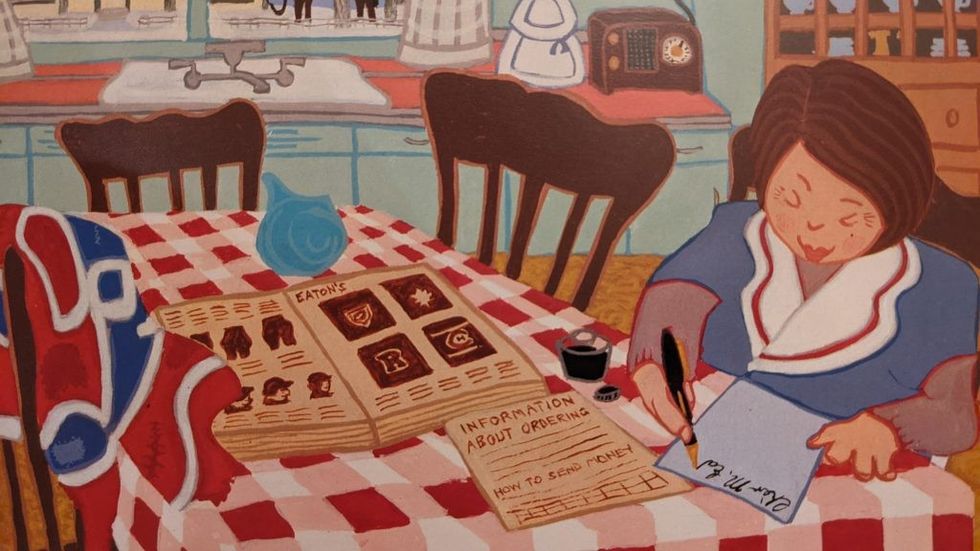
According to the CBC, in the 1950s Eaton’s had “50 per cent market share of department store sales.” But the changing retail landscape and increased competition would start to cause woes for the Canadian institution. By 1997, market share had dropped to 11.4% and in 1999 Eaton’s closed its doors. It was a devastating loss felt by Canadians who left cards and flowers as condolences at Timothy Eaton statues in Winnipeg and Toronto.
Eaton’s was part of the Canadian household. Whether for daily life, special occasions or the holidays. This was especially true during Christmas.
Holiday’s with the Eaton’s
When the holiday season begins is a debatable topic, but once upon a time most Canadians were in agreement thanks to Eaton’s. Archives of Ontario called the arrival of Eaton’s Christmas catalogue the official start of the season.
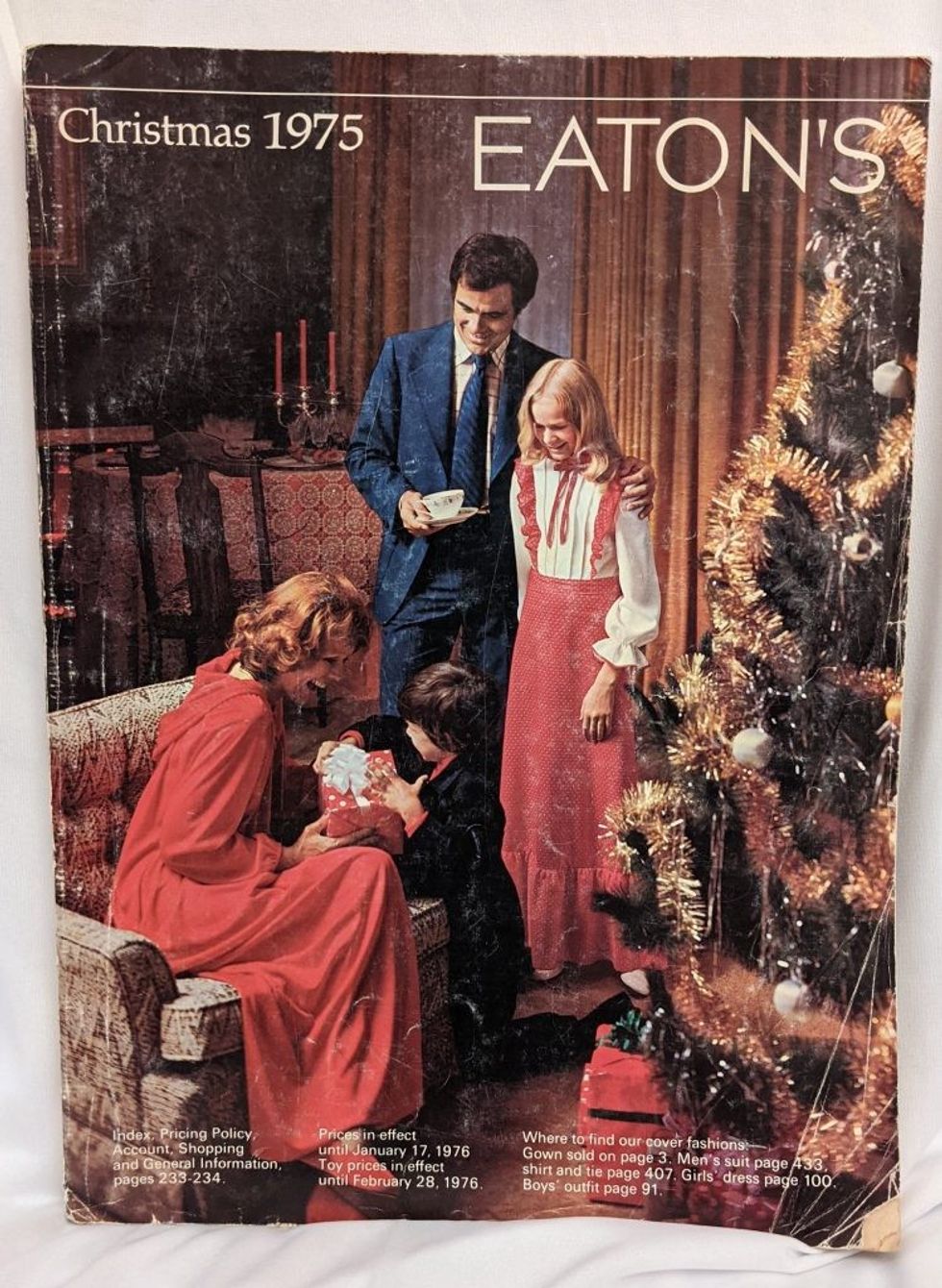
The Eaton’s store windows were transformed into playful holiday wonderlands. In Toronto, families trekked to the College Street location to peer at the marvellous displays, wowing kids and adults alike. Imagine the hand and nose prints from the children peering in at the toys.
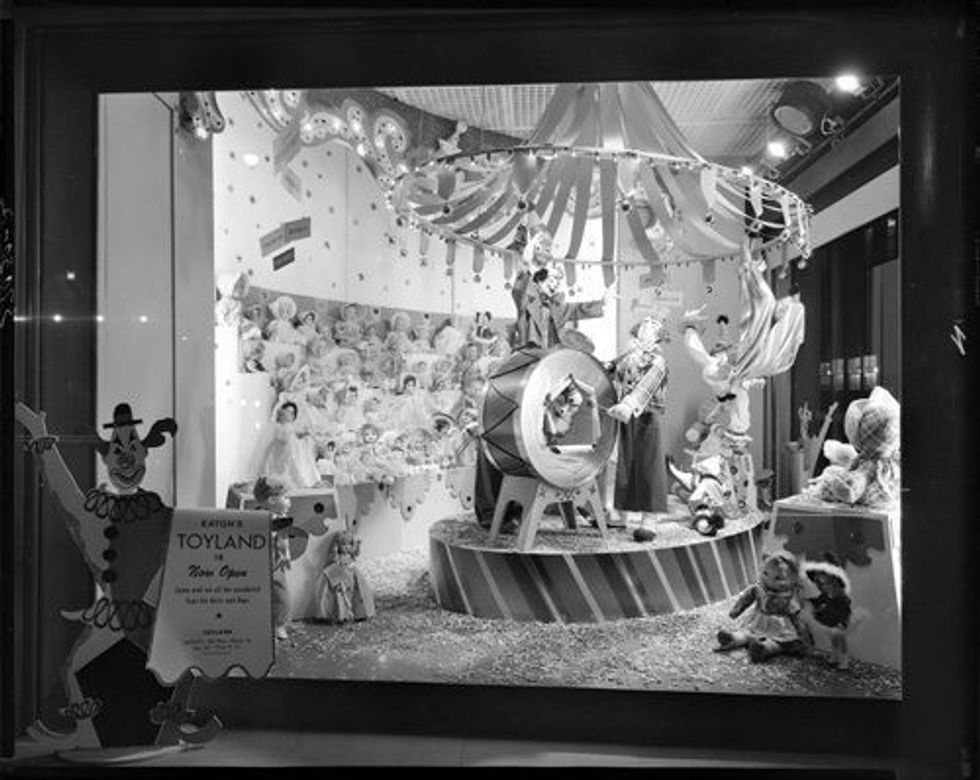
Toronto’s annual Santa Claus Parade was started by Eaton’s. The Eaton’s Santa Claus Parade first welcomed the jolly man in 1905, when he travelled from Union Station on a horse drawn carriage to the store. The parade route was lined with children watching floats of storybook characters pass as they waited for Santa. In 1982, Eaton’s stopped sponsoring the parade, but other companies helped continue the tradition.
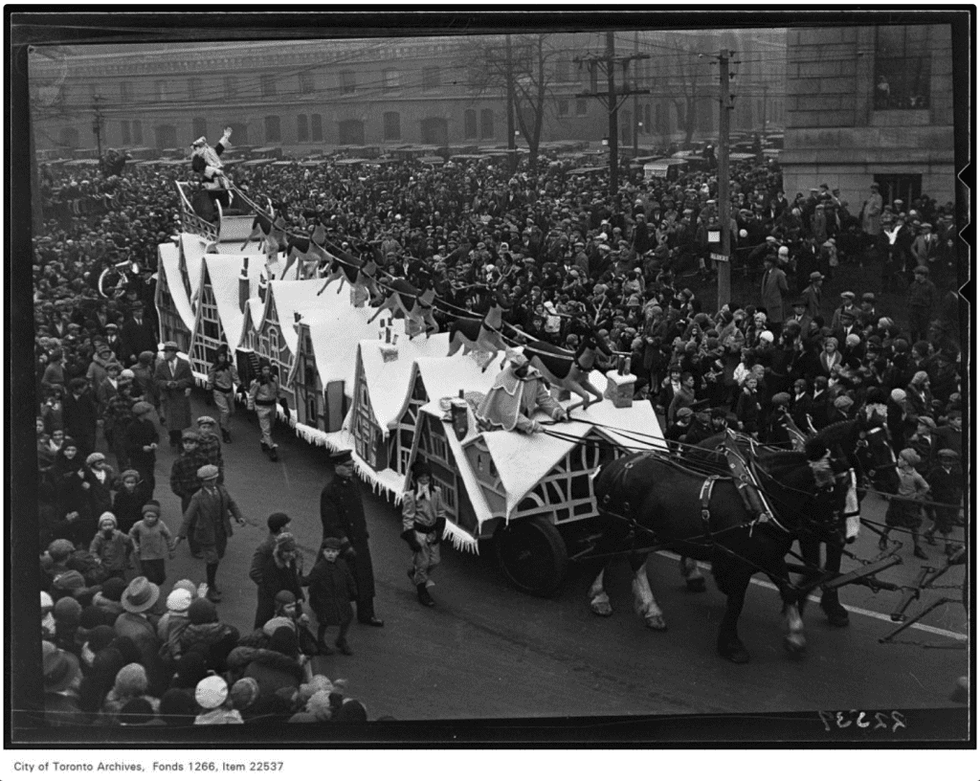
The Eaton’s name is still attached to the holiday’s today through the Cadillac Fairview Toronto Eaton Centre, which invites shoppers to find the perfect gift.
A Legacy to Remember
The Eaton name can be seen on malls, churches, and neighbourhoods. Statues of Timothy are located at the Royal Ontario Museum in Toronto and the Canada Life Centre in Winnipeg. You can even -- if you're lucky enough -- find vintage Eaton’s products in thrift shops.
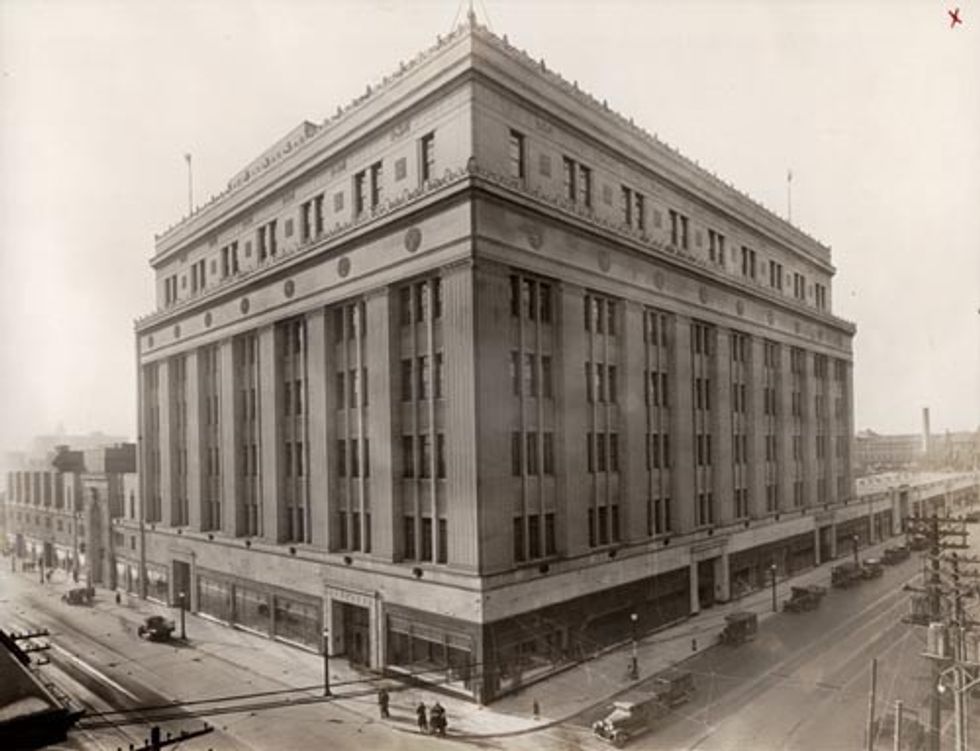
Beyond the names on buildings and the landmarks left behind, the memories Canadians have of Eaton’s are what truly define its influence. One memory is from my grandmother, who travelled to Toronto in search of buyer for her Alpaca wool ponchos. She went to Eaton’s on College Street and was sent to the Eaton’s offices where the Cadillac Fairview Toronto Eaton Centre now stands. Taking the elevator to the fifth floor, she showed her product to the buyers. She recalls them loving the ponchos and making an order to sell them. Unfortunately, she couldn’t fulfill the quantity needed, but still sold them at a store in Yorkville.
Whether parents or grandparents, there is a likely story of Eaton’s waiting to be told this holiday season.
